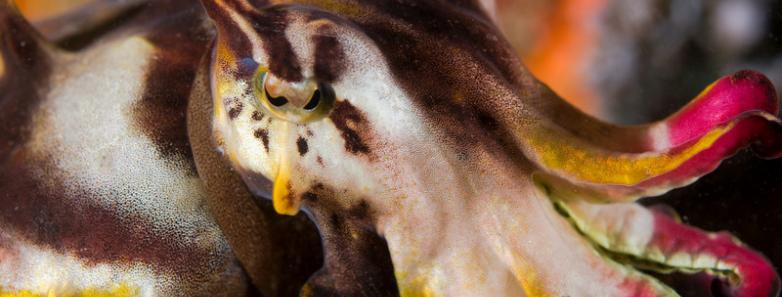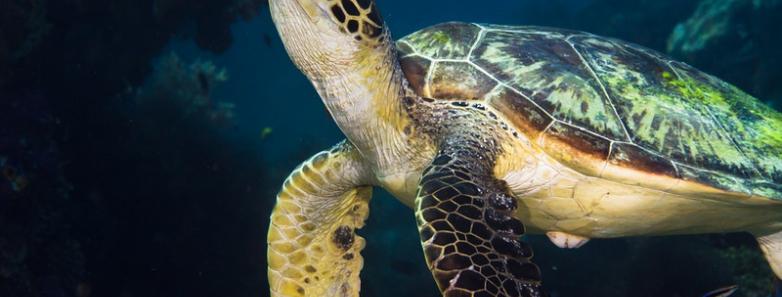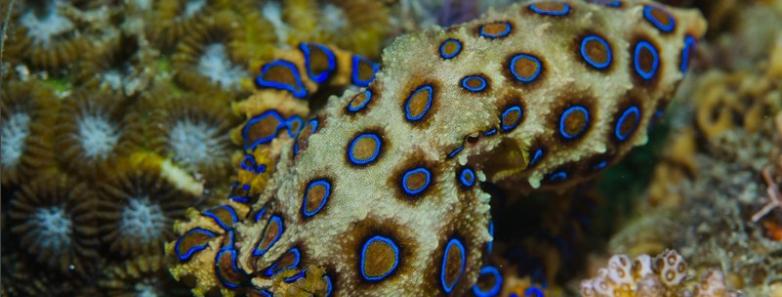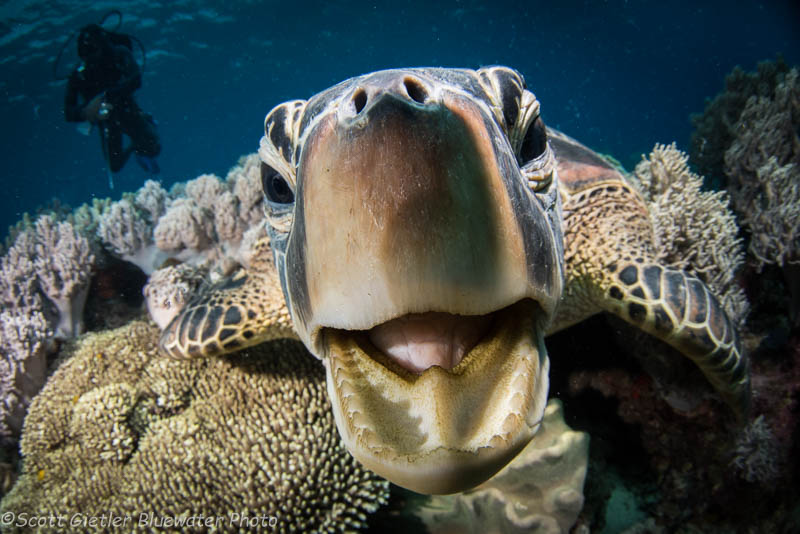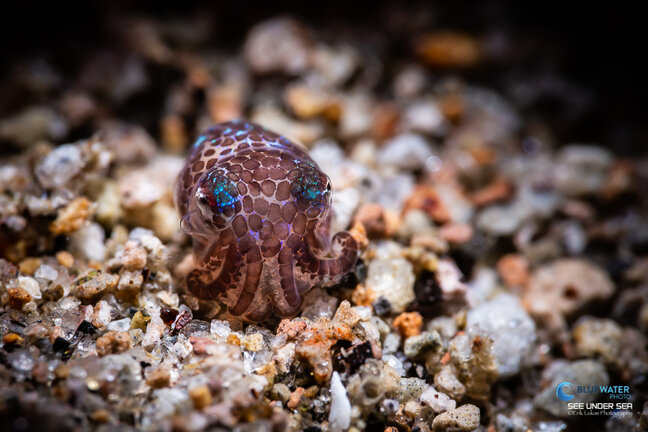Scuba diving in dumaguete, Philippines
Dumaguete diving highlights
Dumaguete is an all-in-one scuba diving destination, offering the perfect mix of everything a scuba diver would want--great selection of resorts, a nice-sized town, excellent muck diving with lots of rare critters along the Dauin coastline, and good wide-angle opportunities at Apo Island. What's more most dive resorts in Dumaguete offer the opportunity to snorkel or dive with whale sharks at nearby Oslob. Add in the friendly people of the Philippines and you have a winning scuba diving destination.
Jump to:
Marine Life & Environment - Best Dive Sites - Diving Conditions
How to Get There - How to Dive Dumaguete - Best Time to Dive
Intro to Dumaguete Diving
Dumaguete is located on the island of Negros, adjacent to Cebu Island, and is a quick inexpensive 1-hour flight from Manila. Most resorts and dive sites lie a few miles south of the city along the coast in an area called Dauin, and many have great house reefs.
One of Dumaguete's main attractions is its nice selection of resorts, including some high-end boutique resorts that you can stay at for a reasonable price. Although the local sites are known mainly for macro and critter dives, a little bit of travel in your boat or car brings you to great reefs and wide-angle subjects like large coral reefs, schools of jacks, groupers and the now famous whale sharks of Cebu.
View Location on Google Map
Watch Bluewater Travel's Dumaguete Episode from our 50 Amazing Adventures Series
Dumaguete's Marine life & best dive sites
Marine Life & Photography Subjects in dumaguete
The scuba diving sites of Dauin have a number of great macro subjects, including pipefish, mandarin fish, juvenile batfish, seahorses, mantis shrimp, ribbon eels, dragonets, hairy squat lobster, snake eels, wonderpus octopus, bobtail squid, a large number of nudibranchs, blue-ring octopus, harlequin shrimp, and flamboyant cuttlefish. Nearby Apo Island has turtles, sea snakes, a school of jacks, groups, clownfish, and lots of reef fish.
Whale Shark Snorkeling at Oslob
Most dive resorts along the Dauin coastline offer a day trip to Oslob, where you can swim and snorkel up-close with the endangered whale sharks. It is located about a 2.5-hour drive away from Dauin, and sightings of these gentle creatures are practically guaranteed.
Local fishermen are authorized to feed the whale sharks daily in Oslob, which in turn makes this area a very reliable to place to see these gentle creatures.
Despite the criticism surrounding the feeding activity in Oslob, some marine scientists argue that it actually gives extraordinary contributions to conservation.
As marine scientist Judi Lowe said in an interview, "Oslob is incredible because it creates livelihoods that are an alternative to fishing. The income lifts the fishermen and their families out of poverty, at the same time as protecting whale sharks and marine reserves. The tourism finances sea patrols by the Bantay Dagat, or volunteer sea wardens, who protect whale sharks and prevent destructive fishing. They are actually fishing less. Fish catch is up and the number of species of fish being caught has increased."
Here is a great underwater video from Apo Island. Watch full-screen in high-def!
Dumaguete Diving Conditions
- Water Temperature: Water temp is generally 27.5C/81F but in January and February this can drop to around 25C/77F. We recommend diving in a 3mm full wetsuit with booties. Many divers choose to wear light gloves and occasionally a hood after several days of repetitive diving. Be sure to bring a light rain jacket, and ample sun protection.
- Visibility: Typically 30 - 40ft at Dauin, 60 - 80ft at Apo Island
- Weather: Dumaguete has two seasons, the dry and the wet seasons. The average maximum temperature is 34.3 °C and the average minimum temperature is 22.9 °C.
overview of the top Dumaguete diving Areas and Best Dive Sites
Here are some of the best dive sites and what you can in and around the Dauin coastline of Dumaguete.
- APO ISLAND
- Apo Island is about an hour boat ride away from Dauin. The diving at Apo Island is quite distinct from that of the main island dive sites. Chapel Point, Cogon and The Sanctuary are popular sites.
- They have gorgeous steep walls with extremely healthy hard coral, large moray eels, clownfish and shrimp gobies were in the sand.
- You can also see blue ribbon eels, Nembrotha nudibranchs and sea snakes. At Cogon, there is sometimes a huge school of Jacks that will let you enter the school for a very cool experience. There are lots of Anthias, as well as juvenile damselfish. The visibility at Apo is very nice, more than 30 meters in most spots and it is the place in Dumaguete to go to see big schools of fish, really healthy hard coral walls and a few critters. If you are a wide-angle shooter, this is the place in Dumaguete for you.
- DAUIN MACRO SITES
- The dive sites of Dauin, near the resorts, are generally sandy slopes, that offer easy diving for dives of all levels. The sites can be reached either by boat or shore dives. Here are a few fish that you can expect to see there: triggerfish, parrotfish, moray eels, surgeonfish, snappers, groupers, Moorish idols, gobies, batfish, lionfish, trumpet fish, puffer fish, filefish, wrasses, and trevallies.
- The area also has several artificial reefs that attract a good number of critters and juvenile fish. These are mainly muck sites, so if you want some reef diving, make sure you let the Bluewater Travel staff know so that we can arrange for you to have a few days also at Apo Island.
Travel Information
How to Get to dumaguete
Dumaguete is about a 1-hour flight from the Manila International Airport (MNL), also known as Ninoy Aquino International Airport. Several major Asian airports run flights to MNL and serve as layovers for visitors from the US and Europe. You can even find direct flights into Manila for major U.S. cities, offered by Philippines Airlines.
How to Dive Dumaguete
Most of the hotels, dive centers, and dive sites are situated 15 kilometers south in Dauin. The dive centers offer up to four dives each day as well as Mandarin fish dives and night dives. Many divers combine Dumaguete with a trip to Puerto Galera, Moalboal, Anilao or Malapascua for thresher sharks.
Read the recap of our 2020 trip to the Visayas.
Best Time to Dive
Dumaguete is a year-round diving destination where critters and rich marine life are to be found all months of the year. April is the driest month of the year, but December to June is usually sunny. July to mid-Nov can get a decent amount of rain, and even a monsoon (Aug - Oct is peak monsoon time) but monsoons in the Philippines generally affect the north part of the Philippines, with Dumaguete affected less. We have traveled to Dumaguete in early July and the rain is short and welcome. October is a particularly good time for macro subjects, especially octopuses.
Join our July 2023 or June 2024 group trips to Dumaguete!
Topside & Non-Diving Activities
Dumaguete is relatively limited in terms of non-dive activities. There are no restaurants or nightclubs in the area. 4 dives a day and three meals is a full schedule, especially as an underwater photographer maintaining a camera rig. Bring a book, talk to new friends and take in the amazing sunsets on the days you're not night diving.
Snorkeling and diving with whale sharks at Oslob in Cebu, is also a popular day trip option offered by many resorts in Dumaguete. I
Other Useful Information
Practical Information
- Currency: Philippine Peso
- Language: Filipino & English
- Main Airport Code: DGT
- Time Zone: UTC+8
- Electricity: 220 V 60 Hz
Got Questions? Ready to Book?
Call us today at 310-915-6677 or email us info@bluewaterdivetravel.com
And let us book your dream vacation!


